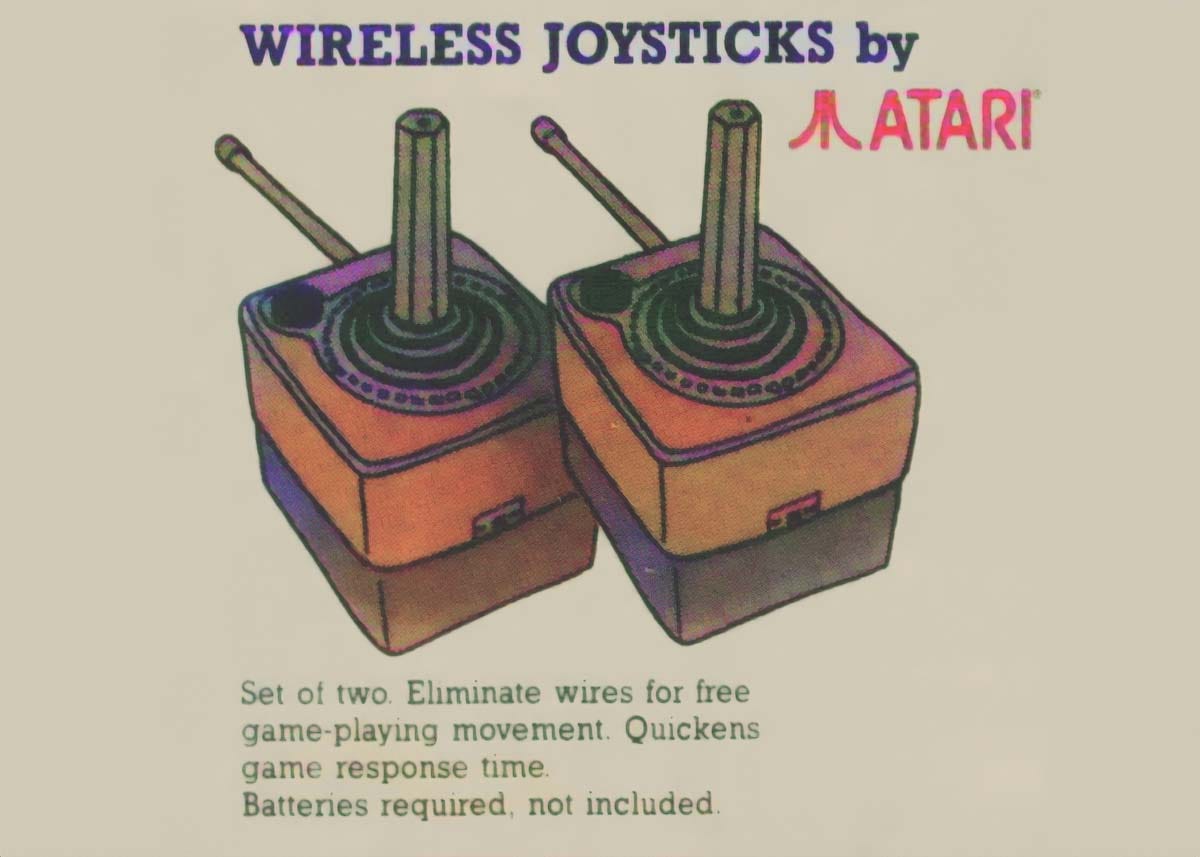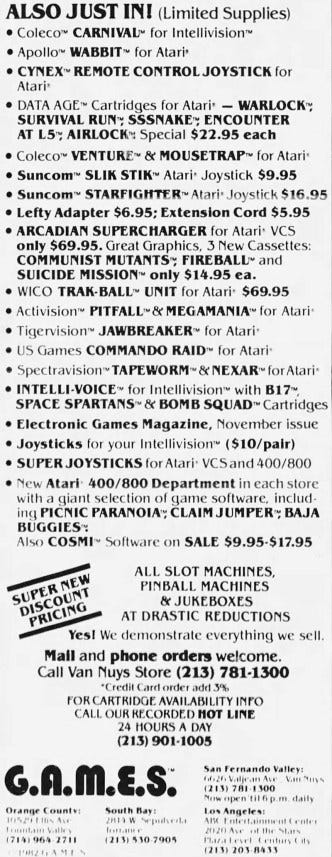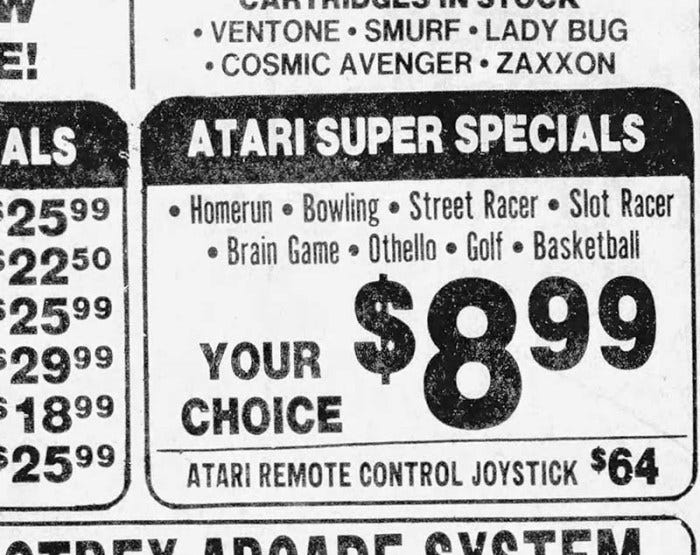Atari 2600 Wireless Joysticks
Before my family got an Atari 2600, we had a Pong-style console. We were completely addicted to this amazing little machine, but it had its issues. Besides playing only variation of Pong, the sliding controllers were just a few inches apart. So, playing a heated game of computer tennis could sometimes lead to physical contact with your opponent. I think on one occasion, my sister and I might have actually smacked our heads into one another.
It seems so simple now, but when the Atari 2600 showed up, one of the features I was most enamored of was the wired joystick. Now instead of being huddled over a machine, shoulder to shoulder, we could almost play a couch-length apart.
But naturally, when things improve, you can’t help but get greedy. Suddenly the ample wired range of the Atari joystick felt like a prison. What if I wanted to stand across the room? Then what?
It took a few years, but in 1983, Atari unleashed a glimpse of gaming’s future. That summer, they released their brand-new wireless Atari Remote Control Joysticks. These were rebranded versions of another joystick, the Cynex Game Mate 2.
While Atari started selling them in 1983, it looks like Cynex (a New Jersey-based company) sold them independently at least as far back as autumn of 1982. I found an ad published by California retailer, G.A.M.E.S from that year, but it was not the only one, and it was not just in California.
Here they are in a New Jersey ad, also in 1982.
Atari must have liked what they saw because in December 1982, it was announced that Cynex would manufacture these sticks exclusively for Atari moving forward. In January 1983, they made an official appearance as part of Atari at the Winter Consumer Electronics Show in Vegas. They also appear in the official 1983 Atari product catalog.
It was at some point in early 1984 that I had my first brush with these newfangled controllers. My cousin had gotten a pair and when I heard that, I couldn’t wait to try them.
Unfortunately, these things were much better on paper. They were basically just an Atari CX40 joystick on top of a radio transmitter. Logically, it makes sense, but the limitations of the tech at the time made the end result very bulky. The base of the stick felt huge, especially in my kid-sized hand, and it had a decent sized antenna jutting from the front of it.
While you were free to move around. It also didn’t exactly work well. The small amount of lag as the joystick moments were sent to a receiver you plugged into your Atari system felt delayed.
I quickly wanted to go back to using the original wired controllers, but didn’t want to insult my cousin. Luckily, the controllers ran on 9v batteries, which meant that they had a shortish lifespan. After just a few hours of play, they were losing power, and we had to put them aside because 9 volt batteries were expensive.
This experience contributed to me not trying to get a set of my own at the time. And even as the price went down, and I continued to collect other Atari games and peripherals, I never put down the money for these controllers.
I sometimes wish I had a set, mostly because I still like the way they look, and I have positive memories of being excited about their release. These joysticks were a great idea, that addressed a real need. Unfortunately, they were way ahead of their time, and they just didn’t have the technology to make something that would satisfy gamers of the time.








Well, a few years back I got hold of a pair of these wireless Atari joysticks along with the base which connects to the Atari 2600.
I did not feel a lag when playing but that might have been down to the games I tried them with.
Or, hope dies last, maybe the technology moved on a bit and I have an improved model?
Anyway, these huge joystick bases and antennas are a sight to behold. The Atari 2600's wireless controllers are a great piece of retro computing that any collector should have IMHO.